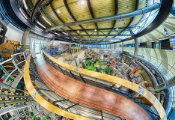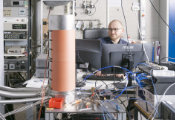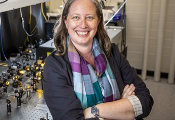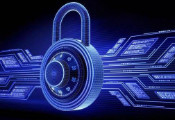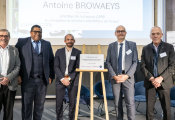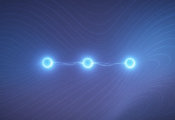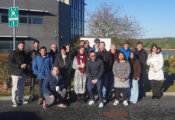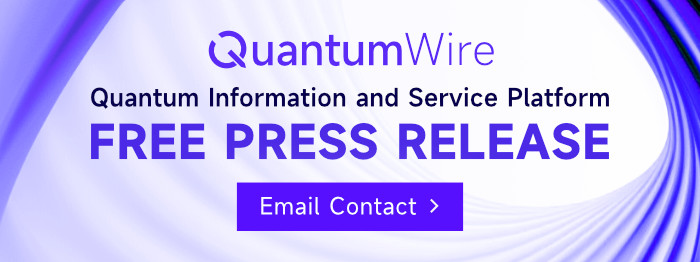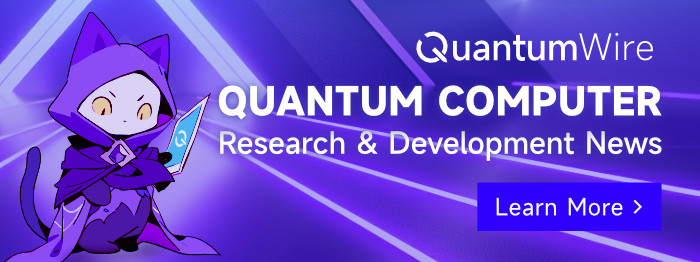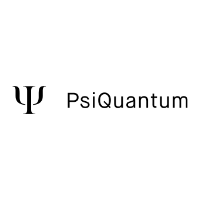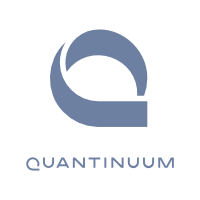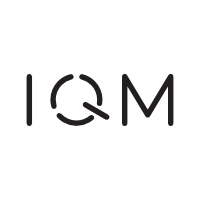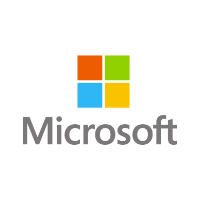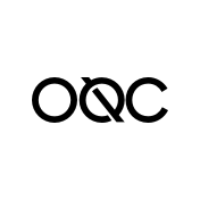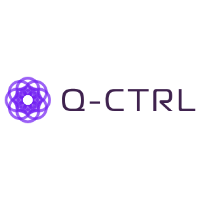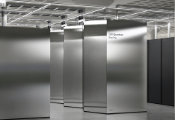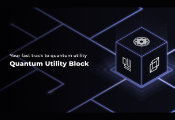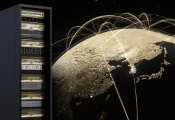Researchers Test New Type of Quantum Computing Protocol Using Qudits, Not Qubits
March 25, 2025 -- Christine Muschik, a research associate faculty member at Perimeter Institute and a professor at the University of Waterloo’s Institute for Quantum Computing, is working at the frontier of quantum computing today – using not just “qubits” that are represented as superpositions of zeros and ones, but with multi-level “qudits” that go well beyond the binary qubit realm.
Muschik is one of two co-leads on a paper in Nature Physics, “” currently in preprint and being published in Nature Physics on March 25 (under embargo until March 25 at 6a.m. eastern time and 10 a.m. in London.)
She leads a team, the quantum interactions theory group at the University of Waterloo, that has been working with an experimental group at the University of Innsbruck in western Austria using a trapped ion quantum computer that manipulates calcium ions (charged calcium atoms).
“Together we did a quantum simulation, a quantum calculation, which is running our protocol with their qudits,” Muschik says.
Most quantum computing today is done with qubits.
Qubits take advantage of quantum mechanical gifts of nature such as superposition, in which particles like electrons can be in a superposition of multiple states (both spin up and spin down at the same time, for example, with the spin being analogous to angular momentum). Quantum computing takes advantage of this property to form a computational unit known as a qubit, of both 0 and 1, containing much more information than what a ‘bit’ in a classical, ordinary computer can carry.
But nature isn’t so binary. “Almost all quantum systems can be in more than two states. That's in fact very natural for quantum systems,” Muschik says.
Muschik has been working on taking advantage of these multi-level states of nature to do quantum computing using “qudits” that can carry information in a much more efficient and powerful way than the usual qubits of quantum computing.
Instead of a qubit in two possible states (0 and 1), a qudit can represent d possible states, by adding states in higher dimensions. It can be a qutrit (d=3) in three possible states: 0, 1, and 2. Or, it can be a ququart (d=4) in four possible states: 0, 1, 2, and 3. Or a ququint, (d=5) in five possible states: 0,1,2,3,4.
The recent experiment described in Nature Physics demonstrated that qudit gates are a big improvement over the traditional qubit approach.
Moreover, the researchers demonstrated a crucial step on the path toward being able to simulate the interactions in nature. It is the first time that a full-fledged qudit algorithm has run on a quantum computer, Muschik says. “We are proud of that.”
Muschik says her primary reason for doing this is to understand particle interactions in nature. “We want to develop quantum protocols to help us understand the Standard Model of particle physics and the universe around us. We hope that future quantum computers will help us to study what happens inside a neutron star or in dynamical particle-antiparticle creation.” she says.
In the past, most researchers deliberately avoided higher-level states because “if you have fewer levels, you basically have an easier time controlling everything,” she says. But in recent years, the University of Innsbruck researchers have been able to develop high-quality qudit gates that are of the same fidelity as qubit gates,” Muschik says
Muschik says that using the alternative to qubits – the qudits – allows a quantum computer to do more with less, and thus reduce the chance of errors.
“A complex problem solved with qubits requires a long circuit with numerous quantum gates. However, in the current era of noisy and imperfect gates, excessive gate operations lead to significant error accumulation. By reducing the number of gates, errors decrease, yielding cleaner results. Using qudits instead of qubits enables more efficient and therefore shorter circuits that yield improved outcomes,” Muschik says.
Beyond just being able to use quantum resources more efficiently, there are other possible advantages, such as in quantum computing error correction, that are also still being explored.
Muschik is excited about the potential of qudits in running more powerful and realistic quantum simulations. Other quantum computing groups are also now demonstrating interest in using qudits.
“We may well be at the beginning of a new wave in quantum information processing,” she says.

